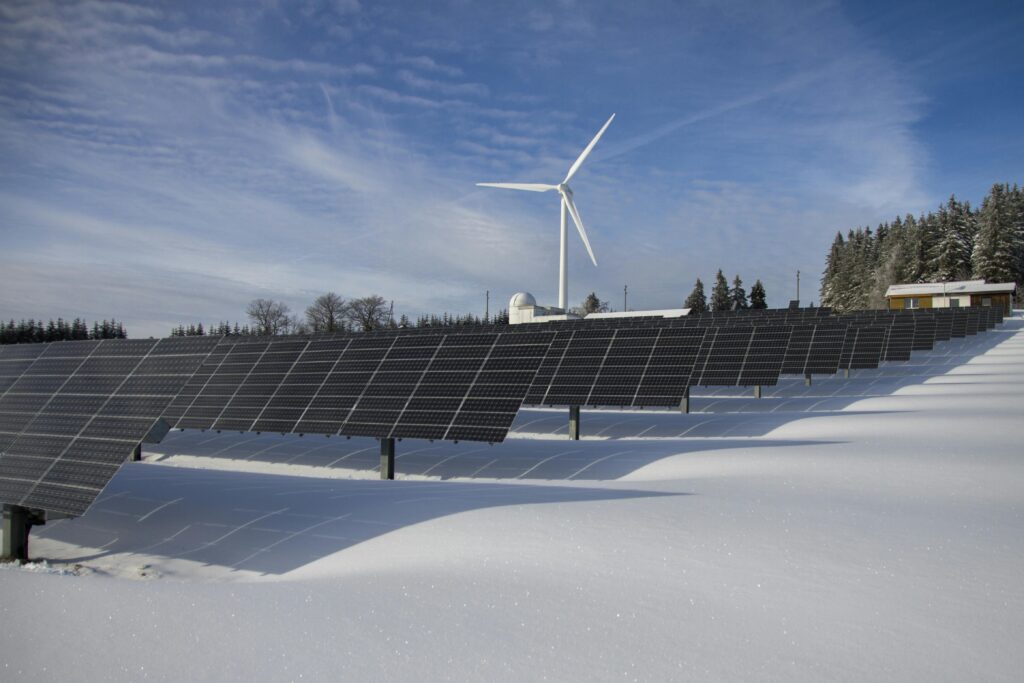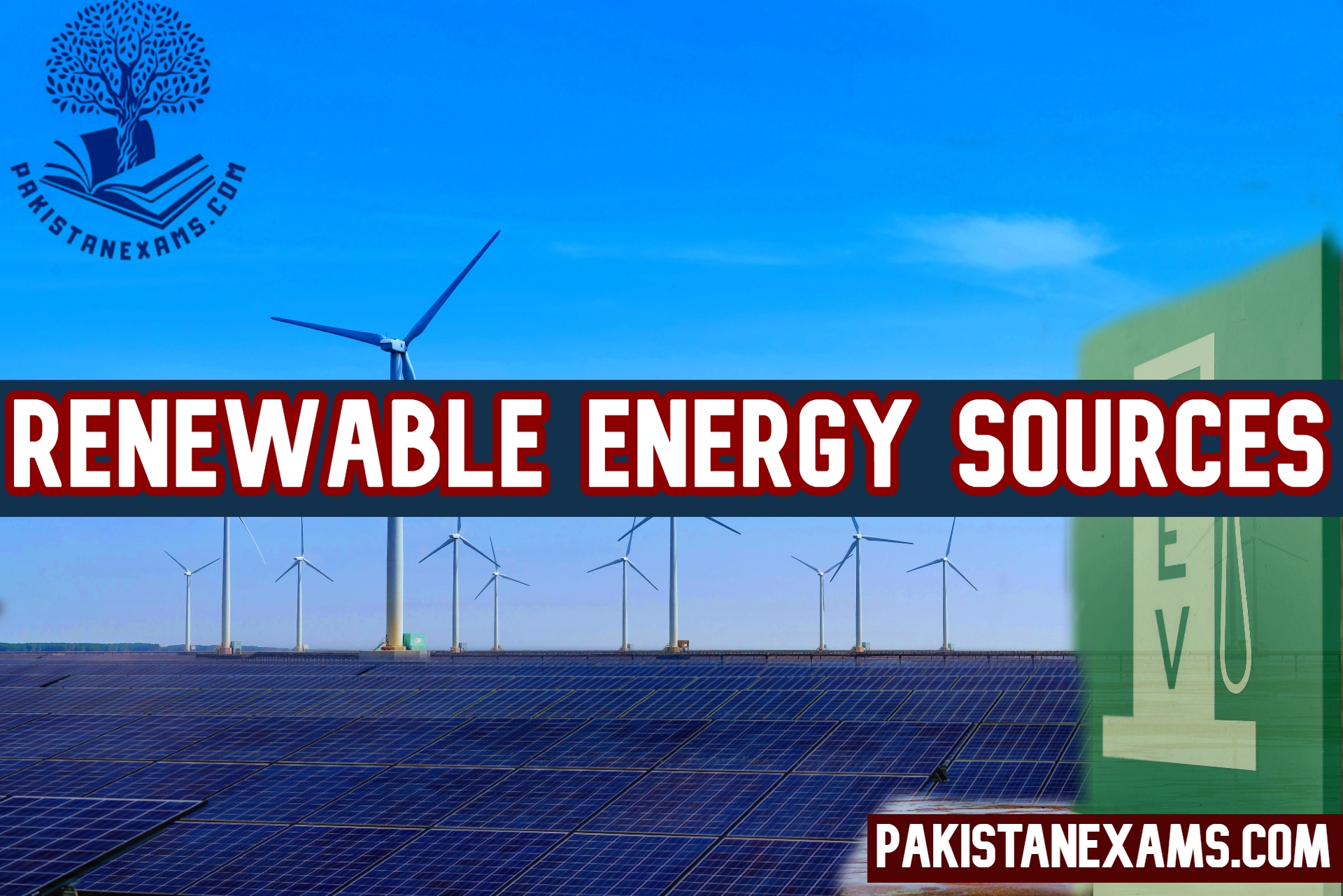
Introduction
Renewable energy is the key to a sustainable future for planet Earth. Renewable energy sources offer a beacon of hope for the challenges of climate change, energy security, and environmental degradation. By harnessing the power of nature, it can reduce reliance on fossil fuels. Therefore, renewable energy sources create a cleaner, greener world for generations to come.
In this blog post, we will take a look at the various renewable energy sources available to us. Moreover, we will explore the benefits, challenges, and real-world examples of each. This post is for you, whether you’re a seasoned environmentalist or just starting to learn about renewable energy. “Going Green: An Overview of Renewable Energy Sources” aims to inspire and educate you on the possibilities of a sustainable energy future.
What are Renewable Energy Sources?
Renewable energy sources are natural resources that can be replenished (filled) over time. They are a sustainable way to generate energy. On the other hand, fossil fuels are finite and contribute to climate change. Renewable energy sources are abundant and have a lower environmental impact. The most common types of renewable energy sources include solar, wind, hydro, geothermal, biomass, tidal, and hydrogen energy.
What are the benefits of Renewable Energy Sources?
The benefits of renewable energy sources are numerous. They offer energy independence and reduce greenhouse gas (GHGs) emissions. GHGs are the main cause of Climate Change. Additionally, they create jobs in the clean energy sector. Renewable energy sources also improve air quality, enhance energy security, and support rural development. Renewable energy sources provide clean energy to power our homes, industries, and transportation systems. Thus, it plays an important role in transitions to a low-carbon world.
Note: Read the solutions for climate change.
Solar Energy: Renewable Energy Source
Solar energy uses the power of the sun to generate electricity. Solar panels convert sunlight into electricity, which makes it a clean and reliable source of energy. The cost of solar panels has been decreasing in recent years. Therefore, solar energy has become a competitive option for people.
Solar energy has several benefits. It has zero emissions, and it needs low maintenance. It can power homes, schools, hospitals, and even entire communities. Moreover, solar energy provides a reliable source of electricity. Hence, it can be used for heating and cooling. With the development of energy storage technologies, solar energy can now be stored for later use, which makes it a more attractive option.
Wind Energy: Renewable Energy Source
Wind energy harnesses the power of wind to generate electricity. Wind turbines convert wind kinetic energy into electricity, which makes it a clean and abundant source of energy. Wind energy can be generated onshore or offshore. The offshore wind farms offer higher capacity factors and reduced visual impact.
Wind energy has various benefits. These include low operating costs, reduced emissions, and job creation. It can power homes, industries, and even cities. This capability of wind energy makes it a vital component of a sustainable energy mix. With the advancements in technology, wind turbines have become more efficient and quieter. Hence, wind energy is a good source of renewable energy source.
Hydro Energy Source of Energy
Hydro energy makes use of the power of moving water to generate electricity. Hydroelectric power plants convert the kinetic energy of water into electricity, which makes it a reliable and renewable source of energy. Hydro energy can be generated from rivers, oceans, or tidal currents.
Hydro energy has numerous benefits, such as high capacity factors, low operating costs, and reduced emissions. It is a clean source of energy. Further, hydro energy can be used for irrigation, flood control, and water supply. With advancements in technology, hydro energy can now be generated from smaller rivers and streams, which makes it a more accessible option.
Geothermal Energy
Geothermal energy uses the heat from the Earth’s core to generate electricity. Geothermal power plants convert the thermal energy of hot water or steam into electricity, which makes it a reliable and renewable source of energy. Moreover, geothermal energy can be generated from volcanic regions or hot springs.
The benefits of geothermal energy include high capacity factors, low emissions, and reliability. It is a good renewable energy source, so it has to be included in the energy mix. With advancements in technology, geothermal energy can now be generated from lower-temperature resources. Therefore, now it is a more accessible option.
Biomass Energy: A Renewable Energy Source
Biomass energy utilizes the energy stored in organic matter to generate electricity or heat. Biomass power plants convert the chemical energy of biomass into electricity or heat, which makes it a renewable source of energy. Biomass can be generated from agricultural waste, forestry residues, or municipal waste.
Biomass energy has various benefits. These include reduced emissions and energy independence. It is a sustainable energy source because it a low emissions. Lastly, biomass energy can also be used for heating and cooling.
Tidal Energy as Renewable Energy Source
It harnesses the power of ocean tides to generate electricity. Tidal power plants convert the kinetic energy of tidal currents into electricity, which makes it a reliable and renewable source of energy. Tidal energy can be generated from coastal regions with high tidal ranges.
Tidal energy has numerous benefits, including high predictability, low visual impact, and reduced emissions. Its beneficial nature makes it a vital component of a sustainable energy mix. Furthermore, tidal energy can be used for coastal protection. With advancements in technology, tidal energy can now be generated from smaller tidal ranges, so it makes it a more accessible option.
Hydrogen Energy: Renewable Energy Source
Hydrogen energy harnesses the power of hydrogen to generate electricity or power transportation. Hydrogen fuel cells convert the chemical energy of hydrogen into electricity. Therefore, it is a clean and reliable source of energy.
Hydrogen energy has several benefits. These benefits include zero emissions, high energy density, and energy independence. Therefore, countries should include hydrogen energy in their energy mix.
Conclusion
In conclusion, renewable energy sources offer a cleaner, greener, and more sustainable alternative to fossil fuels. From solar and wind power to hydro, etc. the options are vast and varied. Each source has its benefits, so they can help us reduce our carbon footprint and mitigate climate change. It is essential to continue investing in renewable energy technologies and infrastructure. Moreover, governments should give subsidies to support the adoption of renewable energy sources. Lastly, the future of life on Earth highly depends on the adoption of renewable energy sources for survival.


1 thought on “Going Green: An Overview of Renewable Energy Sources”